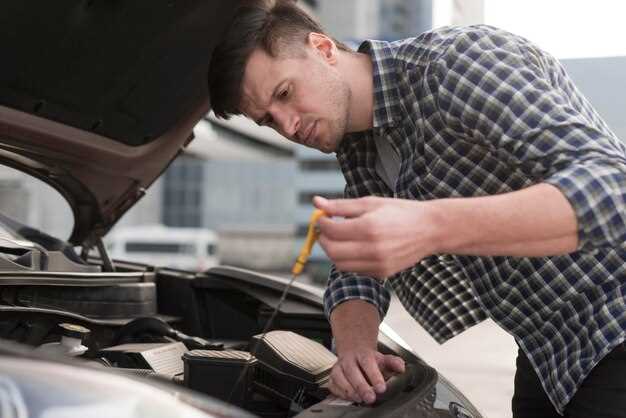How to Check for a Faulty Starter Motor

The starter motor is an essential component of a vehicle’s ignition system, responsible for initiating the engine’s operation. When it begins to show signs of failure, it can lead to frustrating situations where the vehicle fails to start, leaving the driver stranded. Recognizing the symptoms of a faulty starter motor early can save time and money in the long run, as well as prevent potential damage to other parts of the electrical system.
Common symptoms of starter motor failure often include a clicking sound when turning the ignition key, accompanied by a complete lack of engine response. This can indicate that the starter is not engaging properly. Alternatively, if the engine turns over slowly, it may suggest that the starter motor is struggling to draw enough power, often due to a weak battery or internal faults within the starter itself.
Another critical sign to watch for is the presence of dimming lights or electrical accessories that may flicker when attempting to start the engine. Such symptoms indicate that the starter motor is drawing excessive current, which can further signify internal problems. Understanding these indicators is vital for diagnosing starter motor issues promptly and addressing them before they escalate into more significant failures.
Signs of a Failing Starter Motor in Your Vehicle
Identifying a faulty starter motor is crucial for maintaining your vehicle’s performance. One of the primary indicators of motor failure is a clicking noise when you turn the key in the ignition. This sound often suggests that the starter gear is not engaging properly with the engine flywheel.
Another sign to watch for is the motor’s intermittent functionality. If your vehicle fails to start on the first attempt but works after several tries, this inconsistency might signal underlying issues with the starter motor.
Additionally, if you notice dimming lights or electrical components malfunctioning when you attempt to start the engine, it could indicate that the starter motor is drawing excessive power, signaling a potential failure.
Another symptom associated with starter motor problems is a grinding noise during the starting process. This noise occurs when the starter gear is not meshing correctly with the flywheel, leading to wear and potential damage.
Lastly, if you experience a complete failure to start, with no sounds or indications from the starter motor, it could be a sign of total failure. In such cases, it’s essential to seek professional evaluation to avoid further damage and ensure your vehicle’s reliability.
How to Test Your Starter Motor for Proper Functionality

Testing your starter motor is crucial to ensure your vehicle starts smoothly and operates efficiently. A faulty starter motor can lead to failure, leaving you stranded and needing repairs. Here are the steps to properly test your starter motor.
1. Inspect Battery Condition
Before testing the starter motor, check the battery. A weak or dead battery is often mistaken for a starter issue. Ensure the battery is fully charged and the terminals are clean and tight.
2. Listen for Unusual Noises
When you turn the ignition key, pay attention to any unusual sounds. If you hear a clicking noise or no sound at all, this may indicate a failure in the starter motor or its components.
3. Check for Voltage at the Starter Motor
Using a multimeter, measure the voltage at the starter motor while someone turns the key to the ‘start’ position. A reading of 12 volts or more indicates that the starter motor is receiving power. If the voltage is low, the issue may lie with the battery or wiring.
4. Perform a Voltage Drop Test
To further diagnose potential issues, perform a voltage drop test. Connect a multimeter to the positive terminal on the starter motor and the positive battery terminal. A significant voltage drop (more than 0.5 volts) indicates insufficient current reaching the motor, which could signify cable or connection failure.
5. Bench Test the Starter Motor
If previous tests suggest the starter is faulty, remove it for a bench test. Connect it directly to a known good battery. If it spins freely and engages without issues, the starter may be functional, indicating possible wiring or relay issues in the vehicle.
6. Examine the Starter Relay and Ignition Switch
A faulty starter relay or ignition switch can prevent the starter motor from functioning. Test these components to rule out failure in the starting system as a whole. A click sound when turning the key may indicate the relay is not sending power to the motor.
By following these steps, you can accurately assess your starter motor’s functionality, determine the source of the failure, and address any necessary repairs to get your vehicle back on the road.
Common Causes of Starter Motor Failure and Prevention Tips

Starter motor failure can result from various factors, and understanding these causes can help you prevent costly repairs and ensure reliable vehicle performance. One common cause is electrical issues, such as a weak battery or corroded connections, which can inhibit the starter motor’s ability to receive adequate power. Regularly checking and maintaining your battery condition is essential for optimal starter operation.
Another frequent reason for starter motor malfunction is worn-out components. Over time, parts such as the solenoid, brushes, and armature can wear down, leading to insufficient performance. Preventive maintenance, including periodic inspections and replacing worn parts, can extend the starter motor’s lifespan significantly.
Heat exposure is also a contributing factor to starter motor failure. High temperatures, especially in hot climates or after long drives, can damage internal components. Implementing heat-shielding measures or ensuring proper ventilation around the starter motor can mitigate the effects of heat, preserving its functionality.
Additionally, improper installation can lead to premature starter motor failure. Ensuring the starter motor is securely mounted and all connections are tight can prevent operational issues. Always refer to the vehicle’s service manual for precise installation instructions.
Finally, using the correct starter motor for your specific vehicle model is crucial. Incompatible starter motors may not fit correctly or provide the necessary torque, leading to failure. Always consult a professional or refer to your vehicle’s specifications when selecting a replacement starter motor.
By being aware of these common causes and implementing the prevention tips outlined, you can significantly reduce the risk of starter motor failure and enhance your vehicle’s reliability.

